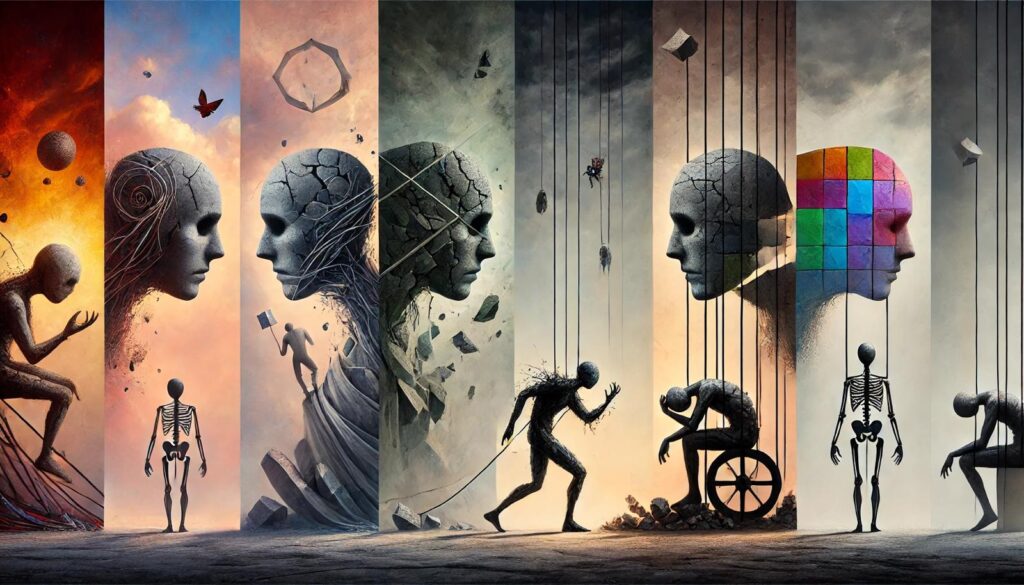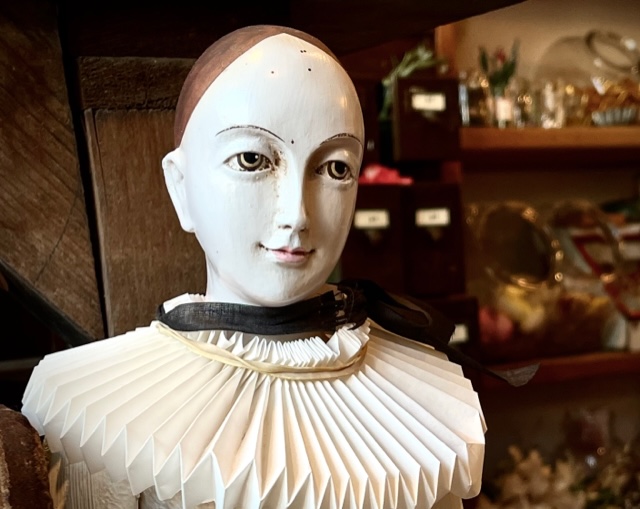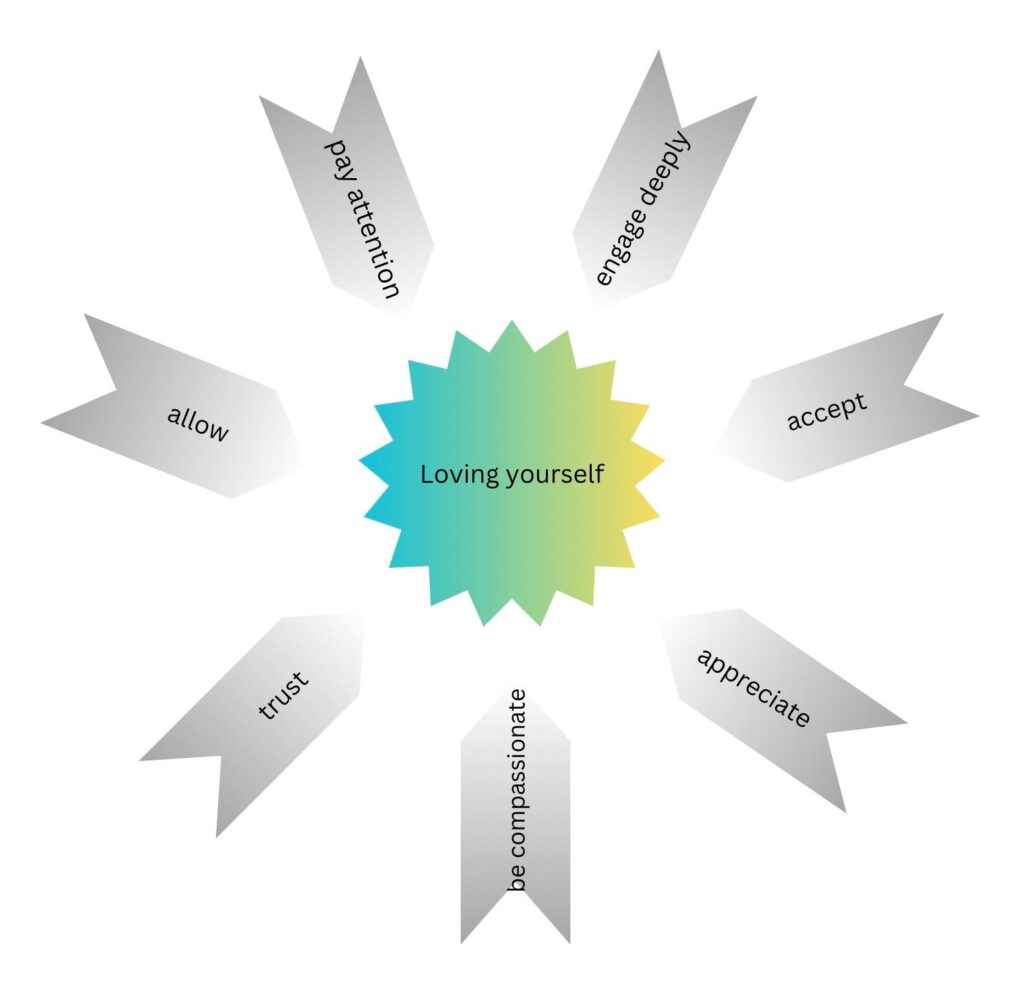
We all wear masks. It’s survival. A way to protect ourselves from pain. These masks, our shields, help us navigate through life’s challenges. But as we grow, they often stop serving us and start suffocating us instead.
Imagine wearing a physical mask -almost glued tightly to your face. It’s so close there’s barely any space to breathe. You look in the mirror, but no matter what expression you make—happy, sad, or hurt—the mask reflects the same blank face. Frustrating, isn’t it? That’s what happens when we rely on emotional masks. They hide our true selves, limiting how we experience life and connect with others as well as ourselves.
These masks become automatic reactions, protecting us from old wounds but also keeping us stuck in repetitive patterns. Instead of embracing new experiences, we keep reacting to life through the lens of past pain. It’s exhausting—and boring.
So, how do we stop hiding and start healing?
Lise Bourbeau, in her book Heal Your Wounds and Find Your True Self, describes five major emotional wounds we often experience, especially in childhood. To cope, we develop “masks” but these masks can also trap us. Here’s a breakdown of the wounds, their masks, and how we can begin to heal:
- Rejection – Mask: Withdrawal
This wound stems from feeling rejected, often by a parent or caregiver. The “withdrawal” mask makes people emotionally or physically retreat or isolated to avoid further rejection.
- Signs of the mask: Avoiding social situations, difficulty expressing needs, self-sabotage, or fear of being noticed.
- Healing tips:
- Acknowledge where rejection shows up in your life.
- Practice self-acceptance and affirm your worth, independent of others’ opinions.
- Slowly open up in safe relationships to rebuild trust.
- Abandonment – Mask: Dependency
This wound arises when a child feels emotionally or physically abandoned. The “dependency” mask creates clinginess, fear of being alone, and constant need for reassurance.
- Signs of the mask: Neediness, fear of solitude, seeking approval, or difficulty making decisions alone.
- Healing tips:
- Cultivate independence by enjoying your own company.
- Nurture your inner child through self-care and self-love.
- Set boundaries to avoid over-reliance on others.
- Humiliation – Mask: Masochism
Linked to feeling shamed or mocked, this wound often leads to self-sacrifice and guilt over having needs. The “masochism” mask makes people prioritize others at the expense of themselves.
- Signs of the mask: Over-apologizing, self-neglect, people-pleasing, or avoiding pleasure.
- Healing tips:
- Practice self-compassion and forgive yourself for perceived flaws.
- Set boundaries to prioritize your needs.
- Engage in activities that bring joy and remind yourself you deserve them.
- Betrayal – Mask: Controlling
This wound forms when a child feels betrayed by broken promises. The “controlling” mask leads to distrust and a strong need for control.
- Signs of the mask: Micromanaging, impatience, distrust, or fear of vulnerability.
- Healing tips:
- Start trusting others by delegating small tasks.
- Explore the root of your fear of betrayal and address the emotions tied to it.
- Practice letting go by embracing uncertainty.
- Injustice – Mask: Perfectionism
This wound comes from feeling unfairly treated or held to impossible standards. The “perfectionism” mask involves striving for flawlessness and suppressing emotions to appear strong.
- Signs of the mask: Overworking, self-criticism, rigidity, or difficulty expressing vulnerability.
- Healing tips:
- Embrace mistakes as opportunities for growth.
- Practice expressing emotions, even if it feels uncomfortable.
- Recognize that you are enough, just as you are.
We all wear these masks, some are stronger than others. The key is to recognize when we’re wearing them and ask ourselves: “What am I hiding? What am I protecting? Can I stay here a bit longer without a mask?” Awareness is empowering.
Connecting with your inner child through journaling, meditation, or therapy can help you give a voice to the part of you that experienced the initial wounds. Being heard is crucial for that inner child to heal.
Let’s go back to the image of the mask – almost glued to your face. Picture yourself standing in front of the mirror again. This time, imagine peeling it off. Feel the air on your skin as you take a deep breath and sigh it out.
That’s what healing feels like—freeing, authentic, and deeply connected to who you truly are.
Healing takes time, but it’s worth it. When we let go of our masks, we open ourselves to a life filled with freedom, authenticity, and meaningful connections.
Are you ready to take yours off?



having connection problems today… found honesty & good intent gets me through the camouflage of the modern (often obsessively image conscious) society… and …making visual challenges to the world I live in… such as…
i dont have a “goal problem” (I usually playing defensive midfielder!) but ignoring my sense of humour, I have a simple method, at the start of any period, if I feel I am “off track” ..make a list of 5 aims that are the most difficult to achieve & then progress them , the hardest first… I feel my accomplishments so far prove the point
best wishes
XM
Thank you, Chris for sharing the tips to be on track. I like the term ‘the camouflage of the modern society’.
Thank you Eda – a very clear and lucid article
Thank you, Tina for your kind feedback.
Happy to receive articles and more, thank you
Thank you for your feedback Ramona!